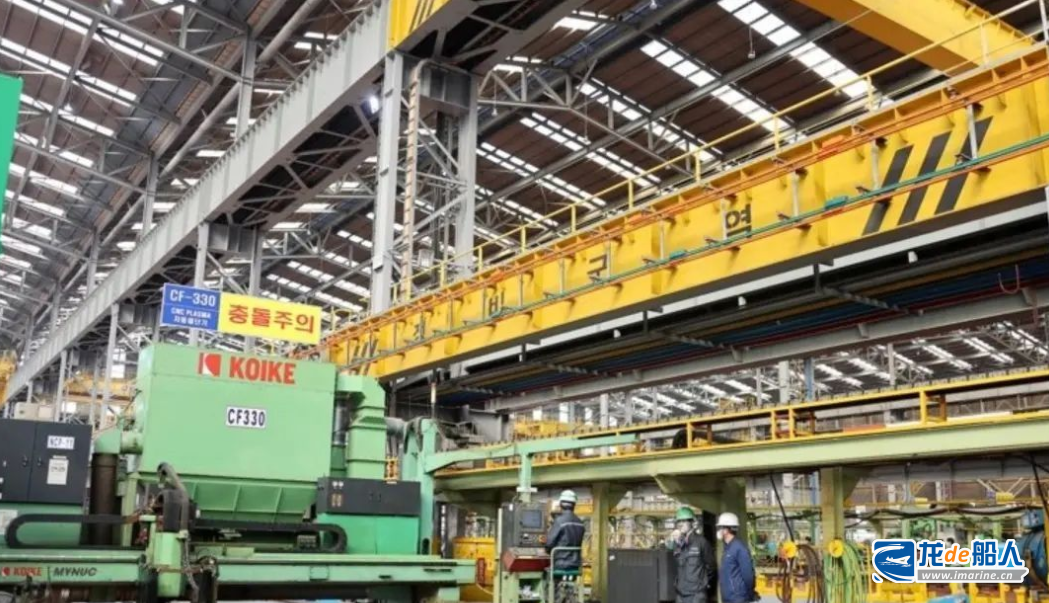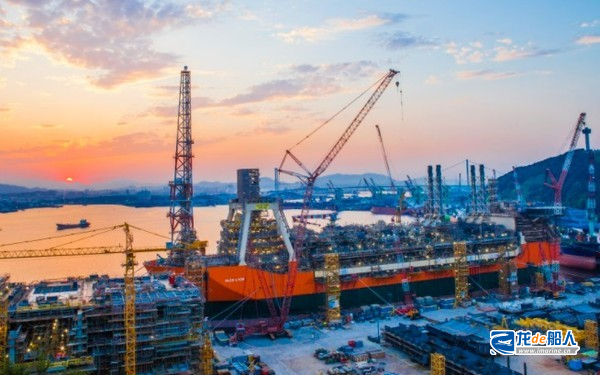Since its official restart on October 28, 2022, HD Hyundai Heavy Industries’ Gunsan Shipyard still cannot build entire ships.

As the global shipbuilding industry enters a super cycle, Korean shipbuilders have scheduled delivery dates until 2027 with orders for high value-added ships such as LNG carriers and large gas carriers. In the first quarter of this year, HD Hyundai Heavy Industries’ ship orders increased by more than 30% over the same period last year. Although the entire industry is enjoying the dividends brought by the shipbuilding revival and has even reached the point of labor shortage, HD Hyundai Heavy Industries Gunsan Shipyard is an exception.
Since ceasing production in 2017, HD Hyundai Heavy Industries’ Gunsan Shipyard has not built any new ships. After resuming operations in 2022, it is only responsible for building ship blocks for HD Hyundai Heavy Industries’ Ulsan Shipyard.
South Korean media said that HD Hyundai Heavy Industries’ Gunsan Shipyard has been completely excluded from the wave of revival in the shipbuilding industry.
Over the past four years, the Jeollabuk-do government has invested 42.4 billion won (approximately US$31 million) in the Gunsan Shipyard to try to maintain its operation, and Gunsan University has also trained talents through shipbuilding-related majors such as the Department of Naval Engineering. However, without the establishment of an industrial ecosystem, relevant graduates are flowing to other shipbuilding areas such as Mokpo and Yeongam.
The problems at Gunsan Shipyard cannot be solved by private enterprises alone. The government must intervene strategically and provide policy incentives.
South Korean media said that the previous South Korean government completely left the normal operation of Gunsan Shipyard to the company’s own discretion, lacking substantial policy intervention. The new government needs to take practical measures, such as giving priority to allocating public procurement ships to Gunsan Shipyard, providing medium- to long-term order support, and restoring the ecosystem of cooperative enterprises.
By integrating marine equipment, hydrogen energy, and secondary battery logistics industries, Gunsan should be developed into a shipbuilding and logistics hub for the west coast of South Korea. To this end, South Korea needs to invest more than 100 billion won (approximately US$73 million) annually in medium- to long-term national budgets and establish a working-level advisory body to ensure the participation of the national government, local governments, and businesses.
South Korean media believe that the normalization of the Gunsan Shipyard is an important opportunity for balanced national development and industrial policy restructuring, as well as crucial for the economic survival of North Jeolla Province. The new administration must face the reality of North Jeolla Province’s industrial backwardness and respond with substantive reforms.

It is understood that the Gunsan Shipyard was established in the most prosperous period of the shipping market before the global financial crisis. It started construction in early 2008 and officially started production at the end of 2009. The shipyard covers an area of 1.8 million square meters, has a 1 million ton dock, is about 700 meters long, and is equipped with a 115-meter-high gantry crane with a maximum lifting capacity of 1,650 tons.
At its peak, the Gunsan Shipyard had more than 6,000 employees and could build about 20 ships a year. The shipyard produced 390,000 tons of steel in 2012, 280,000 tons in 2013, 420,000 tons in 2014, 370,000 tons in 2015 and 380,000 tons in 2016.
On May 4, 2017, HD Hyundai Heavy Industries shut down its Gunsan shipyard due to a lack of orders. With the gradual recovery of the shipbuilding industry, HD Hyundai Heavy Industries announced on October 28, 2022, that it would restart the Gunsan shipyard after a five-year hiatus. In 2024, the Gunsan shipyard entered a stable production phase for ship hull blocks, with the number of employees expected to increase to around 1,500 by 2025.
Regarding the current situation that Gunsan Shipyard can not build a whole ship, a relevant person from HD Hyundai Heavy Industries previously stated: “To restart the shipbuilding business of Gunsan Shipyard, infrastructure construction such as worker skills must be prioritized. Gunsan Shipyard will continue to work hard to shorten the shipbuilding period and eliminate safety risks for workers by improving productivity, while working hard to achieve synergy through cooperation with local governments.”
Some analysts say that labor shortages are the key reason why Gunsan Shipyard cannot expand production. It will only be possible to take on new ship orders independently once all the necessary production conditions are met and the shipyard has a competitive advantage over other shipyards. Typically, building a new ship requires at least 300 workers, but Gunsan Shipyard’s current workforce is clearly below this standard.


